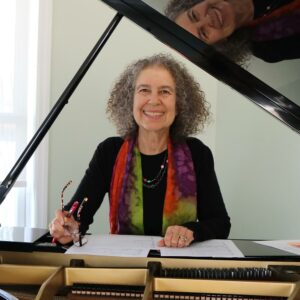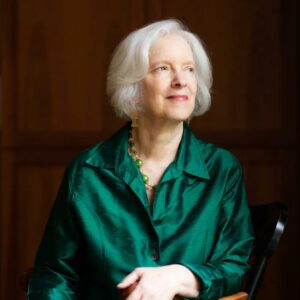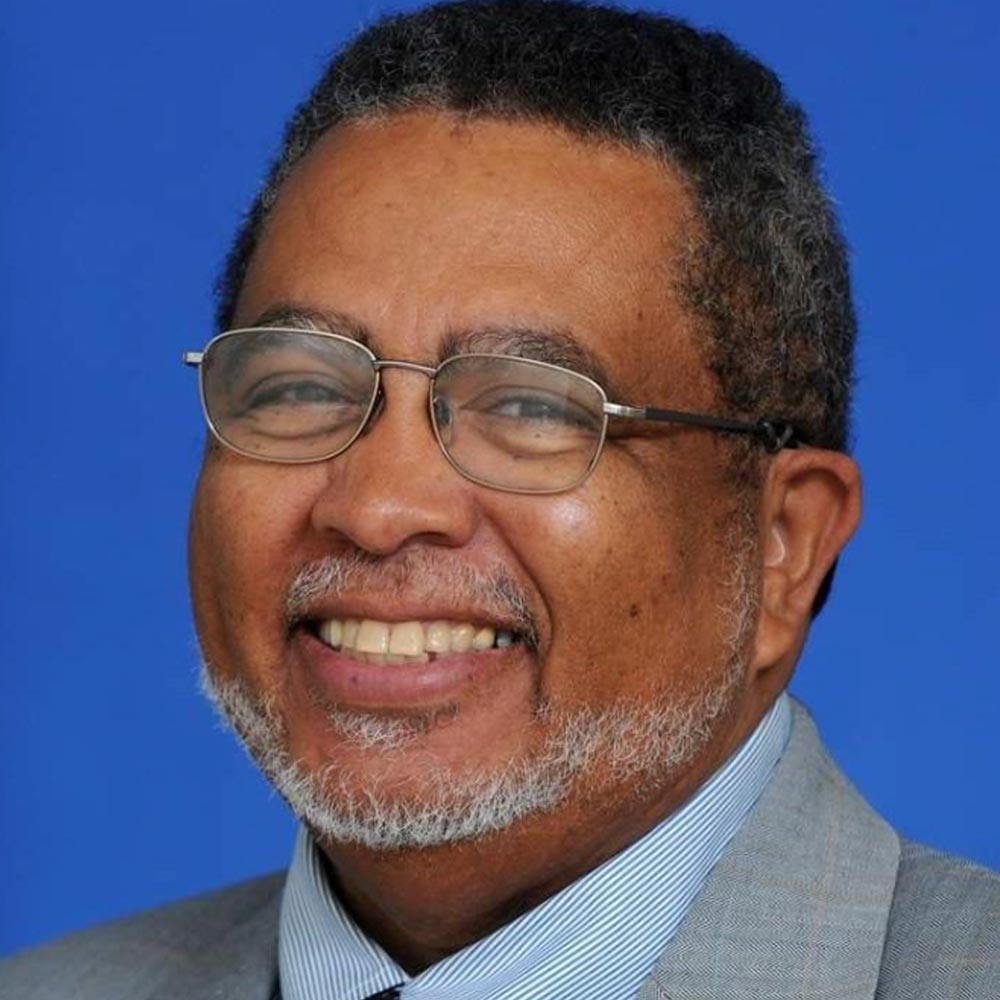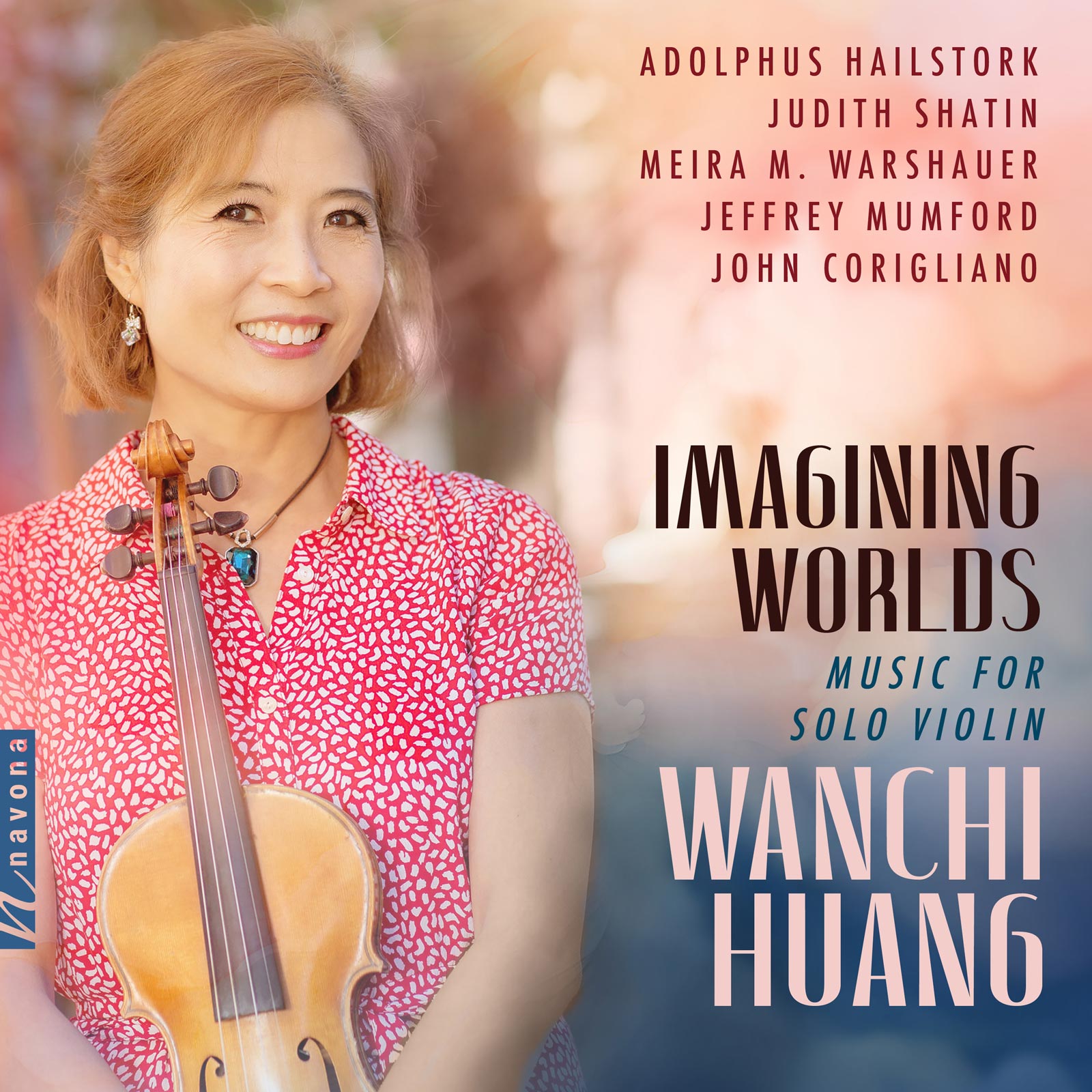Imagining Worlds
Adolphus Hailstork composer
Judith Shatin composer
Meira M. Warshauer composer
Jeffrey Mumford composer
John Corigliano composer
Wanchi Huang violin
Praised for her “incisive technique and an exceptionally rich and beautiful tone,” violinist Wanchi Huang performs a fascinating group of compositions written by a beautifully curated selection of noted composers on IMAGINING WORLDS from Navona Records. Huang’s virtuosic performance takes listeners on a dynamic voyage through the elegant grandeur of the baroque era to the historic hilltops of Italy, passing through reflections on our darkest moments and soaring towards the brighter days that lie ahead. Featuring new music by composers John Corigliano, Adolphus Hailstork, Jeffrey Mumford, Judith Shatin, and Meira Warshauer, IMAGINING WORLDS is a stunning showcase of Huang’s artistry and the compelling voices in contemporary American music.
Listen
Stream/Buy
Choose your platform
Track Listing & Credits
| # | Title | Composer | Performer | |
|---|---|---|---|---|
| 01 | Suite for Solo Violin: I. Prelude: Energetico-Scherzando | Adolphus Hailstork | Wanchi Huang, violin | 2:06 |
| 02 | Suite for Solo Violin: II. March: Adagio-Spirito-Marziale | Adolphus Hailstork | Wanchi Huang, violin | 1:45 |
| 03 | Suite for Solo Violin: III. Melody: Allegretto grazioso-Allegro-Allegretto grazioso | Adolphus Hailstork | Wanchi Huang, violin | 2:18 |
| 04 | Suite for Solo Violin: IV. Finale Energetico-Allegro con brio | Adolphus Hailstork | Wanchi Huang, violin | 4:19 |
| 05 | For the Fallen - for Amplified Violin and Electronics | Judith Shatin | Wanchi Huang, violin | 7:05 |
| 06 | In Memoriam - for Solo Violin | Meira M. Warshauer | Wanchi Huang, violin | 5:05 |
| 07 | Bracha - for Solo Violin | Meira M. Warshauer | Wanchi Huang, violin | 4:59 |
| 08 | an expanding distance of multiple voices: I. Estatico e molto appassionato | Jeffrey Mumford | Wanchi Huang, violin | 2:25 |
| 09 | an expanding distance of multiple voices: II. Sparso ed expansive | Jeffrey Mumford | Wanchi Huang, violin | 3:40 |
| 10 | an expanding distance of multiple voices: III. Molto delicatissimo ed stereo possible | Jeffrey Mumford | Wanchi Huang, violin | 1:01 |
| 11 | an expanding distance of multiple voices: IV. Molto appassionato | Jeffrey Mumford | Wanchi Huang, violin | 1:45 |
| 12 | an expanding distance of multiple voices: V. Maestoso | Jeffrey Mumford | Wanchi Huang, violin | 1:58 |
| 13 | The Red Violin Caprices | John Corigliano | Wanchi Huang, violin | 8:58 |
Recorded May 25-27, 2023 at James Madison University School of Music Recording Studio in Harrisonburg VA
Session Producer & Engineer David Cottrell
Assistant Session Engineer Mickey Glasgo
Editing, Mixing, and Mastering David Cottrell
Executive Producer Bob Lord
A&R Director Brandon MacNeil
A&R Danielle Sullivan
VP of Production Jan Košulič
Audio Director Lucas Paquette
VP, Design & Marketing Brett Picknell
Art Director Ryan Harrison
Design Edward A. Fleming
Publicity Chelsea Kornago, Kacie Brown, Aidan Curran
Digital Marketing Manager Brett Iannucci
Artist Information

Wanchi Huang
Huang is the Full Professor of Violin at James Madison University School of Music and contributes to the community as a concertmaster of the Waynesboro Symphony. Her recordings of the complete Sonatas of Eugène Ysaÿe, Partitas and Sonatas of J.S. Bach for unaccompanied violin, and music by William Walton and Benjamin Britten in a collaboration with longtime friend and pianist Robert Koenig, are all on the Centaur Records label, have been excellently reviewed. “. . . her incisive technique and an exceptionally rich and beautiful tone. . .” was noted by Phil's Classical Reviews, Audio Video Club of Atlanta.

Meira Warshauer
With a musical palette ranging from traditional Jewish prayer modes to minimalist textures with rich melodic contours, and from jazz-influenced rhythms to imaginative orchestrations of the natural world, composer Dr. Meira Warshauer’s music has been performed live to critical acclaim and heard on broadcast and online media worldwide. In much demand for commissions, she writes for orchestras, chamber and vocal ensembles, and soloists, as well as opera.

Judith Shatin
An explorer of sonic realms, Judith Shatin is equally known for her acoustic, electroacoustic, and digital music. Called “highly inventive on every level” by the Washington Post, her music has been commissioned by organizations including the Barlow Endowment, Fromm Foundation, Carnegie Hall, the Library of Congress, Wintergreen Performing Arts, and the Lila Wallace Reader’s Digest Arts Partners Program.

Adolphus Hailstork
Adolphus Hailstork received his doctorate in composition from Michigan State University, where he was a student of H. Owen Reed. He had previously studied at the Manhattan School of Music, under Vittorio Giannini and David Diamond, at the American Institute at Fontainebleau with Nadia Boulanger, and at Howard University with Mark Fax.

Jeffrey Mumford
Born in Washington DC in 1955, composer Jeffrey Mumford has received numerous fellowships, grants, awards, and commissions.
Awards include the “Academy Award in Music” from the American Academy of Arts & Letters, a Fellowship from the Guggenheim Foundation, and an ASCAP Aaron Copland Scholarship. He was also the winner of the inaugural National Black Arts Festival/Atlanta Symphony Orchestra Composition Competition.
John Corigliano
John Corigliano continues to add to one of the richest, most unusual, and most widely celebrated bodies of work any composer has created over the last forty years. Corigliano’s scores, now numbering over one hundred, have won the Pulitzer Prize, the Grawemeyer Award, five Grammy Awards, an Academy Award, and have been performed and recorded by many of the most prominent orchestras, soloists, and chamber musicians in the world. Attentive listening to this music reveals an unconfined imagination, one which has taken traditional notions like “symphony” or “concerto” and redefined them in a uniquely transparent idiom forged as much from the post-war European avant-garde as from his American forebears.
Notes
This project was inspired by conversations with Judith Shatin, whom I met after my solo recital at the long-established Wednesday Music Club in Charlottesville VA. As we discussed compositional approaches and composers, my desire to create this album took shape. While I am a fan of traditional western music and have spent more than half of my life performing this music, I also feel strongly about performing and promoting music by a diverse range of living composers. With the support and encouragement of my family and my parents, I am delighted to have worked with my expert music industry recording colleagues here at the James Madison University, David Cottrell and Mickey Glasgo, with whom I look forward to working together again. Additionally, I am grateful to have had opportunities to collaborate with most of these esteemed composers, while preparing their music and planning to perform it widely in both the United States and abroad during the coming seasons.
— Wanchi Huang

